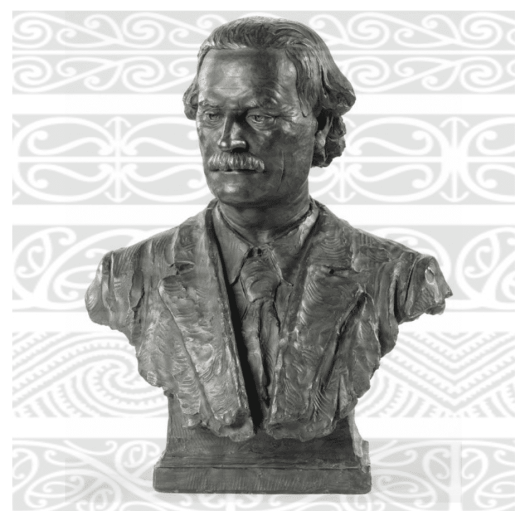Rangihīroa Panoho 2016-2024. No part of this document (text or imagery) is free to be copied, plagiarised or shared for publication or for uses neither intended nor agreed on by the author without his express permission. Details for writing to Rangihīroa are as follows: blueskypanoho@icloud.com The opinions expressed are entirely mine.
A U G U S T U S H A M I L T O N
104 years on: the book
that is always open
The following entry is an updated version of an article written for a LinkedIn audience in 2013 after documenting the Christ Church yard, Russell with Mark Adams. We were returning to Tāmaki, 22 September 2013, after photographing the Kaitaia Gateway (photo: Mark Adams, Pihirau collection), in Te Ahu Heritage Museum, Kaitaia for MAORI ART . I realised I needed this essay as a point of reference in the ‘Future Flowerings’ essay, MAORI ART Curator II so I have decided to publish it ahead of schedule. This essay helps explain the longer legacy of trying to write a history of Māori art and it has within it a range of lessons for current generations of writers wanting to write Māori art. It could be considered an extension of ideas covered in ‘Future Flowerings’ and Bulls and Territory This post on the pioneering Dominion Museum ethnologist helps better prepare the ground for a discussion regarding intellectual/curatorial territory and the ongoing delineation of space in the Polynesian Art/museum world – the focus of the next post: MaC V Headlands: unpublished responses
Down the end of a central access path to one of New Zealand’s oldest surviving ecclesiastical buildings – Christ Church, Kororāreka – resides a plump, largely unadorned, funerary stone. Its two simple bronze plaques facing the path remember Augustus Hamilton, (1853-1913). He died a century ago in the summer months researching church records in the North. The kohatu sits as if on outdoor museum display duty. Its own pedestal reminds the viewer a tribute worthy of study lies above. 5 carefully machined marble blocks hold the massive weight. A plaque in English reads indifferently to another in te reo below – the predicament of translation. The Māori text sits horizontally on the face of a plinth block facing out towards the path. The English plaque describes the deceased ‘Director of the Dominion Museum, Wellington, [as] ‘An Eminent Student of Māori Lore, A lover of Nature, an Earnest Seeker after Truth.’
 Michael Illingworth, portrait of Augustus Hamilton, bronze statue five years before the ethnologists death in 1908. Behind Hamilton are kōwhaiwhai images reproduced in his voluminous Art Workmanship of the Māori Race
Michael Illingworth, portrait of Augustus Hamilton, bronze statue five years before the ethnologists death in 1908. Behind Hamilton are kōwhaiwhai images reproduced in his voluminous Art Workmanship of the Māori Race
Hamilton’s grave is central foreground. Far left is a memorial to loyalist Hokianga rangatira Tamati Waaka Nene. Although Hamilton died at the early age of 50 (while researching in Northland) this particular, now relatively remote, graveyard seems an entirely appropriate resting place for the scientist with a passion for Māori art. Local Māori gifting the land in the early nineteenth century required the church cemetery allow for the burial of both Māori and Pākehā alongside one another. One can pick out the resting place in White’s image. Follow its perspectival entry point leading along the path to the west face of the church. In the left background of the image sits the slightly rough, pocked top edge of Hamilton’s grave. It is positioned against another pou whakamaharatanga ‘memorial.’ A lofty Celtic medieval cross emblazoned with the nomina sacra IHS – the Greco Roman abbreviation for Jesus – stands out. It is dedicated to prominent nineteenth century Hokianga rangatira Tamati Waka Nene.
Continue reading “M a C IV: ‘MAORI ART’ – Augustus Hamilton and the book that’s always open”





